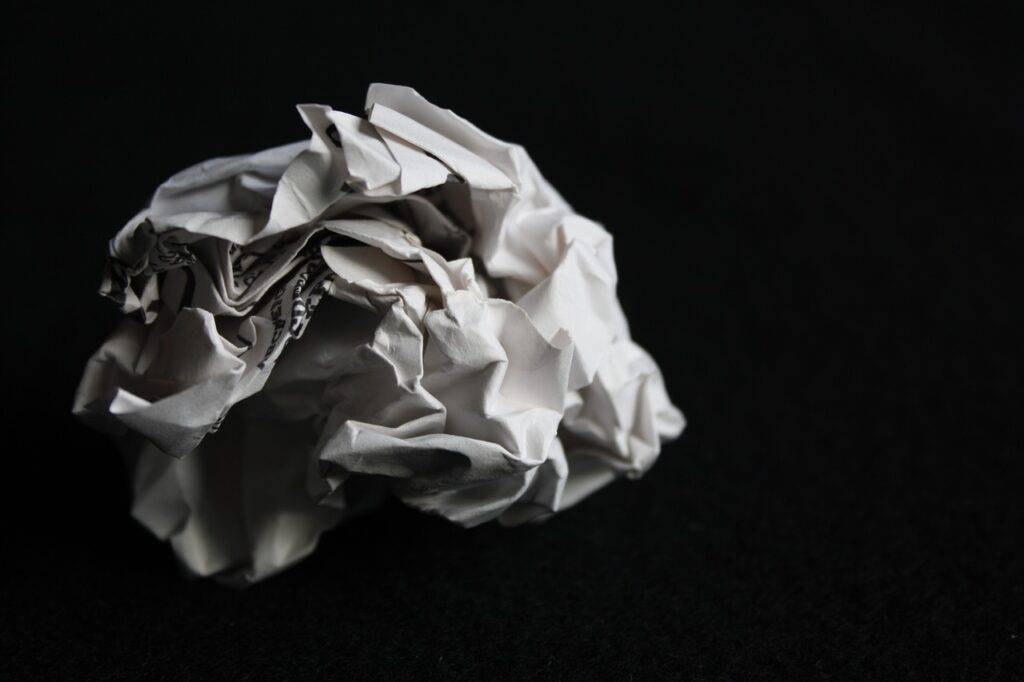
While flashy multimedia presentations and high-tech gadgets can be impressive, sometimes all it takes to drive a point home is a simple object. A prop is one of the most powerful tools that presenters have at their disposal.
A prop is any object that you use to help illustrate or demonstrate a point during a presentation. It can be anything from a whiteboard or flipchart to a physical object that you bring with you to the stage. The key is to use a prop in a way that helps to make your point more effectively.
Here is a wonderful example that I just discovered. It is a short TikTok video that was shared on Twitter. (I am not on TikTok, at least not yet!) Nicole, the woman in the video, is an elementary school teacher. Her TikTok channel is teachinglittlewonderz.
Nicole uses a simple piece of paper to demonstrate to her Grade 3 class the effect that our words can have on others. She involves the kids in the exercise to make it even more powerful.
Using a prop in a presentation can help to illustrate a concept, provide a tangible example, and make the information being presented more relatable and memorable. I am confident that the kids in Nicole’s class will remember this lesson for a long time.
Here are a few ways in which a simple prop can help to enhance your presentation:
1. A prop can make your point more visual and concrete.
One of the biggest challenges that presenters face is to make their ideas and concepts easy to understand and remember. A prop can help to make your point more visual and concrete, which makes it easier for your audience to grasp and retain the information that you are presenting. For example, if you are talking about the benefits of a new product, you could use a sample to illustrate how it works.
2. A prop can add interest and variety to your presentation.
People are more likely to pay attention to something that is interesting. A prop can add interest and variety to your presentation, which can help to keep your audience engaged. For example, if you were giving a talk on the importance of exercise, you might bring a jump rope or small weights or an exercise mat to the stage and use it (or them) to demonstrate some simple exercises that people can do at home.
3. A prop can illustrate complex ideas in a simple way.
Sometimes, it can be difficult to explain complex ideas or concepts in a way that is easy for people to understand. A prop can help to illustrate these ideas in a simple and visual way, which can make it much easier for your audience to grasp the concept. By crumpling up the paper and then unfolding it to reveal all of the creases, Nicole simply, but powerfully, showed her young class the impact of harmful words on others.
Further reading
For more on how props help a presentation, including examples from the international health world and the business world, you can read this post.
For ten tips on how to use props in a presentation, with video examples, you can read this post.
Conclusion
The use of a simple prop in a presentation can be an incredibly powerful tool for driving a point home and engaging the audience. Whether you are using a prop to illustrate a concept, provide a tangible example, or even add a touch of humor, it is a presentation tool that should not be overlooked.
The next time you are giving a presentation—to room of senior executive or a Grade 3 class—consider using a prop to make your point and engage your audience.
















3 Replies to “The power of a prop”
Thanks for this article. Lots of useful information about props.
I wonder if there’s a correlation between the type of prop used and the audience’s response. Does humor work better with certain props, while serious topics benefit from others?
It’s an interesting question. I think that a lot depends on the context, which includes the topic, the prop, the point being made, and the overall situation in which the presentation is taking place. Props can be used in both serious and humorous situations. And a touch of humour can also lighten an otherwise serious topic.
Comments are closed.